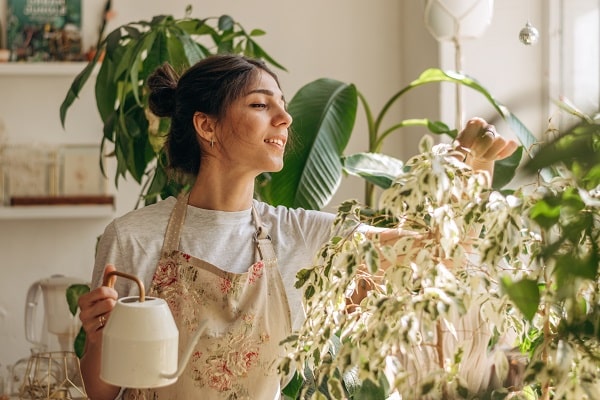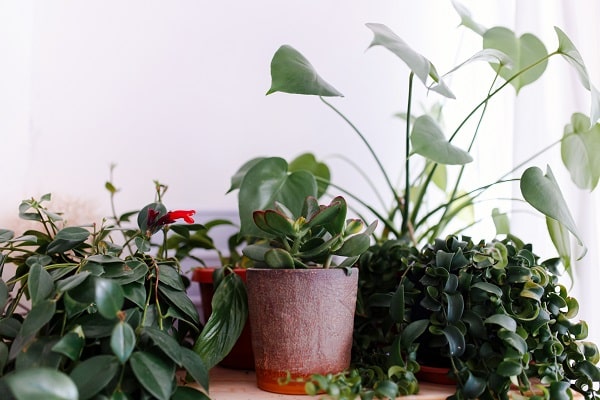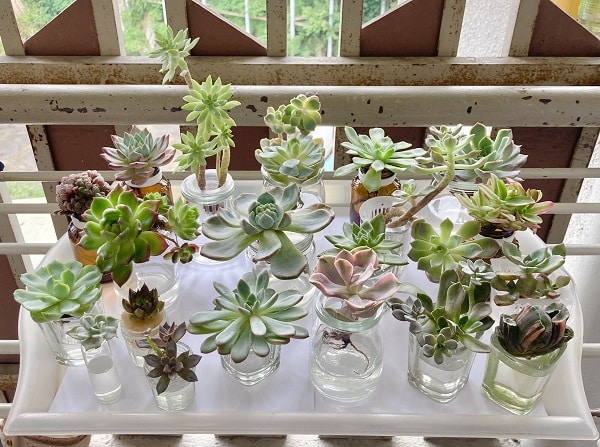Contents
- 1
- 2 House Plants: Complete Guide To Choosing, Growing, & Caring For Indoor Plants
- 3 Light
- 4 Water
- 5 Transpiration
- 6 Air\Ventilation
- 7 Humidity
- 8 Soil
- 9 Potting
- 10 Fertilizer
- 11 Indoor Plants That Are Easiest To Take Care
- 12 ZZ Plant
- 13 Philodendron
- 14 Most Succulents
- 15 Pothos
- 16 Sansevieria
- 17 Dracaena
- 18 Hedera Helix
- 19 Conclusion
Indoor plants are an essential component of interior design. Not only does greenery add beauty to homes, but it is also well known to boost mood. Additionally, indoor house plants are easy to take care of and are great options for little yard space outside.
So, if you are looking to add greenery to your home, here is the top-rated guide to help you choose the best plants.
House Plants: Complete Guide To Choosing, Growing, & Caring For Indoor Plants
Indoor plants can quickly grow and flourish in less sunlight and enclosed surroundings. Being a beginner houseplant, let explore these ten elements for growing plants indoors:
Light

Light is among the topmost essential elements for a plant. Even if some plants are ‘low light tolerant,’ such as sansevieria or calathea, they still need some light for survival. However, some plants can operate with artificial lights like the Chinese evergreen, nephthytis, dracaenas, African violets, and philodendrons. Before choosing a house plant, you are likely to consider the light condition of your apartment, room, or the house itself.
Water

Water is also an essential element for plant survival. It helps in plant metabolism and growth. Even desertic plants like cacti require some water. Like rivers serve as a mode of transportation, so is water in plants.
Transpiration

Transpiration is a crucial part of climate stability and the water cycle and essential for plants’ photosynthesis. Additionally, when a plant transpires, it cools the plant.
Air\Ventilation

Plants love airflow; therefore, air plays a vital role in transpiring and exhalation. Additionally, airflow helps in wicking away excess moisture in plants. For example, air plants or tillandsia require frequent misting and soaking; there is rot due to water left on the leaves. Hence airflow is essential to wick away the moisture from plants.
Humidity

The amount of water in the air is called humidity. Dryness in the air leads to moisture-wicking during winter months, particularly those living in the northeastern United States. However, most tropical plants require mid-range humidity; therefore, use good humidifiers for your plant.
Soil

Choosing suitable soil is optimal for plant survival in the long run. You can purchase soil from a local plant shop or try making your own. Bagged soil is a good choice as it helps in preventing fungi, mold, or pests. On the other hand, succulent soil is suitable for succulents and cacti as it is light and well-draining.
Potting

It will be good for a beginner indoor planter to prefer terracotta planters. It is because terracotta pots are breathable, unlike plastic pots. Additionally, terracotta pots are good at regulating temperatures.
Fertilizer

Providing fertilizer to plants becomes necessary if you grow indoor plants as indoor potted plants do not receive what they could have outside. Hence giving the correct fertilizers at the right time helps keep your indoor plants refreshed.
Indoor Plants That Are Easiest To Take Care
ZZ Plant

Zamoculcas Zamiifolia has been the gold standard for many indoor houseplant beginners. It originated in drought-prone Africa. Since the last few centuries, ZZ plants have entered most offices and homes. ZZ plants have dark green broad leaves to find space in many indoor house lovers. According to studies conducted by NASA, the ZZ plant is also considered an air purifier. It is beneficial in removing copious amounts of toxins.
Philodendron

Philodendron has served as the mainstay in the interior garden for past decades. It is easy to care for, and even the inexperienced can grow them without trouble. Taking the plant out once in a while helps flush soil and clean the leaves. Philodendron can easily thrive throughout the year without complaint.
Most Succulents

Succulents are decorative additives to your interior home. The diverse group of succulents provides you with endless color variations. Most succulents require low maintenance and can store water for a longer duration. The plant can practically be grown in dry and warmer conditions. If you are a beginner, succulents are the perfect plant to grow indoors year-round.
Pothos

Pothos is among the easiest indoor plants to grow. The tropical vine comes in various patterns and colors that attract various decors. Pothos are tolerant to light, pest, and disease-free. In addition, it helps purify the surrounding air. Pothos grow best in bright indirect sunlight; therefore, don’t forget to put them beside your window.
Sansevieria

The snake plant is good for purifying the air and can be strategically placed for decoration. It is commonly referred to as mother-in-law’s tongue and can be grown anywhere. It is among the few plants that help to filter indoor air. Hence it is an ideal plant for bedroom decoration.
Dracaena

If you prefer to grow dracaena, locate it in bright filtered light. It can be grown both indoors and outdoors in a subtropical climate. It is a favored houseplant known for its ornamental value. Additional plants at homes help improve cognitive function, concentration, and overall mental wellness.
Hedera Helix

English ivy is another widespread plant that helps filter airborne toxins indoors. Hedera helix is among the common indoor plants. Helix requires low light and hence is excellent for indoor decor. English ivy helps filter airborne toxins and is highly effective at cleansing xylene, formaldehyde, benzene, and toluene.
Conclusion
The top-rated guide will be highly beneficial for guiding you to choose, grow, and care for indoor plants. Ensure you supply the plants with the proper light, soil, and conditions based on what they need. After reading this guide, you are sure to be plant mom or dad!